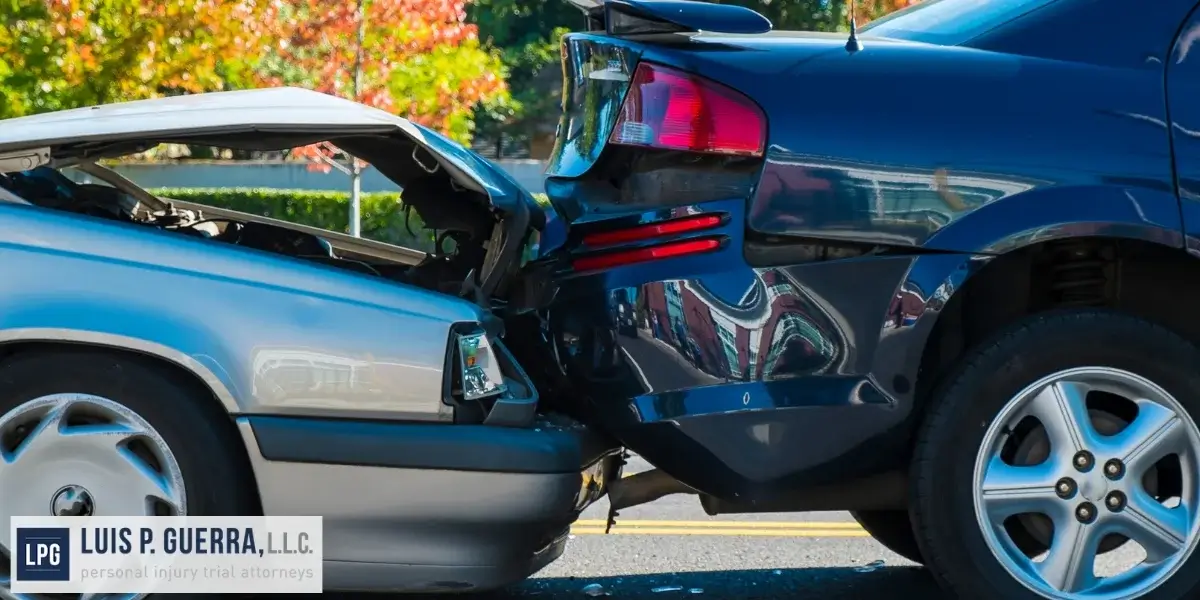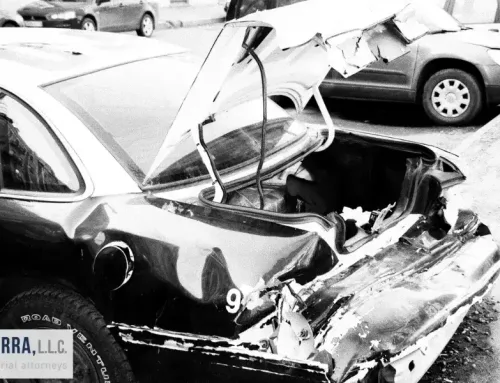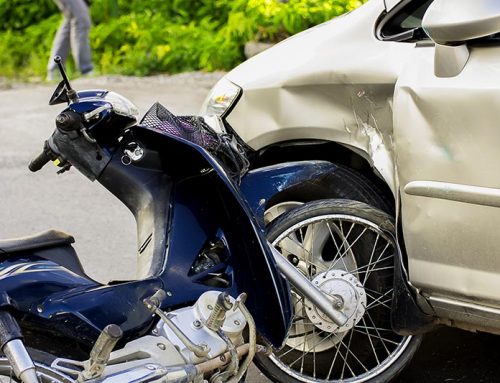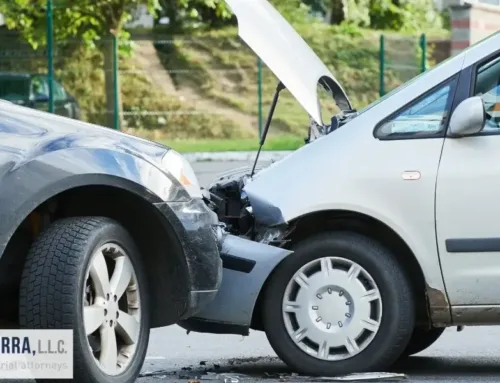Phoenix Car Accident Statistics
Here’s the thing about Phoenix car accident statistics – they’re pretty sobering, and every driver in the Valley should know what they’re up against on our roads. We see it all the time: folks get blindsided (literally and figuratively) by just how common these crashes are. Sure, nobody thinks it’ll happen to them, but the numbers don’t lie.
When accidents do happen, our firm steps in to handle the legal mess that follows. At Luis P. Guerra, LLC, our car accident lawyers in Phoenix have helped countless Phoenix drivers navigate insurance claims, medical bills, and everything else that comes after a crash – because honestly, dealing with all that paperwork is the last thing you need when you’re already dealing with injuries.
Key Takeaways
- Phoenix car accident statistics reveal concerning trends, with over 24,000 crashes annually and peak accident times occurring during rush hours
- Most common causes include speeding (35%), distracted driving (28%), and DUI incidents (12%) of all crashes
- High-risk areas cluster around I-17, I-10, and major intersections like 7th Avenue and Indian School Road
- Fatal accidents have increased 15% over the past three years, making Phoenix rank among the top 10 deadliest cities nationwide
- Economic impact exceeds $2.8 billion annually in medical costs, property damage, and lost productivity
What Time Do Most Accidents Actually Happen in Phoenix?
The trends in phoenix car accidents over the years show distinct patterns that might surprise you. Rush hour isn’t just busy—it’s dangerous.
Peak accident times occur between 7-9 AM and 5-7 PM weekdays. But here’s the kicker: Friday evenings see a 40% spike compared to other weekdays (particularly between 6-8 PM when people are eager to start their weekend).
Weekend patterns tell a different story entirely. Saturday nights from 10 PM to 2 AM show the highest times of day with highest accident rates in phoenix, primarily due to impaired driving incidents.
Seasonal spikes:
- Summer months (June-August): +25% accidents due to increased tourism
- Monsoon season: 300% increase during active storms
- Holiday weekends: Memorial Day, July 4th, Labor Day see significant jumps
The yearly comparison of phoenix car accidents reveals something troubling. 2022 saw 24,847 total crashes compared to 22,156 in 2020—that’s a 12% increase despite similar traffic volumes.
Weather plays a bigger role than expected. Even light rain increases accident rates by 70% because desert drivers aren’t accustomed to wet conditions.
Breakdown of Accident Types and Contributing Factors
Here’s what the data actually shows about the most common causes of phoenix car accidents:
Primary Contributing Factors:
- Speeding: 35% of all incidents
- Distracted driving: 28%
- Following too closely: 18%
- DUI/impairment: 12%
- Aggressive driving: 7%
The impact of speeding on phoenix accidents can’t be overstated. Speed-related crashes result in fatalities 45% more often than other accident types (a sobering reality that affects families across the Valley).
Phoenix fatal accident statistics paint a grim picture: 238 deaths in 2022, up from 201 in 2021. Motorcyclists account for 22% of these fatalities despite representing only 3% of total vehicles on the road.
Distracted driving statistics in phoenix reveal texting while driving causes 1 in 4 crashes. Young drivers (16-25) are involved in 38% of distraction-related accidents.
Phoenix DUI accident statistics show concerning weekend patterns. Friday and Saturday nights account for 60% of all impaired driving incidents, with the average BAC being .15—nearly twice the legal limit.
The weather’s effect on phoenix car crashes demonstrates how unprepared drivers are for monsoons. Dust storms cause multi-vehicle pileups annually, particularly on I-10 between Phoenix and Tucson.
Common driving mistakes in phoenix include:
- Failing to yield right-of-way
- Improper lane changes
- Running red lights
- Tailgating (especially problematic given aggressive driving culture)
Are You Driving Through Phoenix’s Most Dangerous Areas?
The high-risk areas for accidents in phoenix concentrate around major freeway interchanges and busy commercial districts.
Worst intersections in phoenix for crashes (ranked by annual incidents):
- 7th Avenue & Indian School Road: 127 crashes annually
- Central Avenue & Camelback Road: 114 crashes
- 19th Avenue & Northern Avenue: 98 crashes
- 35th Avenue & Thomas Road: 89 crashes
Interstate highways tell their own story. The most accident-prone freeways in phoenix include I-17 (particularly the “Stack” interchange), I-10 through downtown, and Loop 101 during construction zones.
Dangerous roads to avoid in phoenix during peak times:
- Grand Avenue (SR-60): highest pedestrian fatality rate
- Indian School Road: frequent rear-end collisions
- Camelback Road: aggressive driving incidents
But it’s not just busy roads. Neighborhoods with high accident rates in phoenix often correlate with socioeconomic factors and infrastructure age (older areas with narrow streets and limited visibility see disproportionate crash rates).
The City of Phoenix Open Data Portal provides real-time accident mapping – bookmark it.
Comparing Phoenix to Regional and National Accident Data
Phoenix’s position in phoenix’s national ranking in car accidents is troubling: 8th worst among major U.S. cities for traffic fatalities per capita.
Comparing phoenix to Tucson in accident rates reveals interesting disparities. Phoenix sees 3.2 crashes per 1,000 residents annually, while Tucson reports 2.8—despite similar driving conditions and demographics.
The rural vs urban accident rates near Phoenix comparison shows urban areas have higher frequency but rural crashes are deadlier. Rural Arizona highways see fatality rates 60% higher than Phoenix metro areas due to higher speeds and longer emergency response times.
National Context:
- Phoenix fatality rate: 12.4 per 100,000 residents
- Arizona state average: 18.9 per 100,000
- National average: 11.0 per 100,000
What’s driving these numbers? Urban sprawl forces longer commutes, aggressive driving culture, and rapid population growth straining infrastructure.
Safe Driving Tips and Prevention Strategies for Phoenix Residents
Smart safe driving tips for phoenix residents go beyond basic defensive driving.
Essential Strategies:
- Maintain 4-second following distance (not 3) due to frequent sudden stops
- Never drive during dust storms—pull over immediately
- Use headlights during monsoons even during daytime
- Avoid left turns at non-signalized intersections during rush hour
How to avoid accidents in phoenix requires understanding local driving culture. Aggressive lane changes are common, so anticipate sudden movements from other drivers.
The benefits of taking defensive driving courses in phoenix include insurance discounts (up to 10%) and ticket dismissal for eligible violations.
Managing Road Rage: Road rage is real here. How to manage road rage incidents in phoenix traffic starts with recognizing triggers: extreme heat, construction delays, and aggressive drivers create perfect storm conditions.
Never engage. Don’t make eye contact with aggressive drivers.
Post-Accident Protocol: What to do after a car accident in phoenix:
- Move vehicles if safely possible
- Call 911 (required for injuries or $1,000+ damage)
- Document everything with photos
- Exchange information with all parties
- Contact your insurance immediately
The National Highway Traffic Safety Administration’s safe driving resources provide additional guidance tailored to desert driving conditions.
Legal Aspects, Reporting, and Insurance in Phoenix Car Accidents
How to obtain an accident report in phoenix requires following specific procedures. Reports are available through ADOT’s crash reporting system within 7-10 business days.
Arizona law mandates reporting requirements after an accident in phoenix for crashes involving:
- Any injury
- Death
- Property damage exceeding $1,000
- Hit-and-run incidents
Legal rights after an accident in phoenix include compensation for medical expenses, lost wages, and property damage. Arizona follows comparative negligence rules—you can recover damages even if partially at fault.
The insurance claim process for phoenix drivers typically takes 30-45 days for straightforward cases. Arizona requires minimum coverage of $25,000 per person for bodily injury, but experts recommend much higher limits.
Filing a lawsuit after a phoenix accident becomes necessary when insurance settlements are inadequate. You have two years from the accident date to file a personal injury claim in Arizona.
Driver licensing considerations: Requirements for obtaining or renewing a driver’s license in phoenix include vision tests and knowledge updates – especially important for older drivers who may not be familiar with recent traffic pattern changes.
Frequently Asked Questions About Phoenix Car Accidents
What are the most dangerous times to drive in Phoenix?
Phoenix car accident statistics show the most dangerous times are weekday rush hours (7-9 AM and 5-7 PM), but here’s what caught me off guard – Friday evenings from 6-8 PM are absolutely brutal, with a 40% spike in crashes. People get weekend fever and drive like maniacs.
Saturday nights between 10 PM-2 AM? That’s when the DUI accidents peak. And drive extra safely during monsoon season, accident rates jump 300% during active storms because desert drivers panic at the first drop of rain.
Which Phoenix intersections and roads should I avoid?
The worst intersection for crashes in Phoenix is 7th Avenue and Indian School Road with 127 accidents annually. Central Avenue at Camelback isn’t far behind with 114 crashes yearly.
As for freeways, I-17 near the “Stack” interchange is a nightmare, especially during construction. Grand Avenue has the highest pedestrian fatality rate, so extra caution there. Honestly, Camelback Road during rush hour is where road rage incidents spike, so maybe take a parallel route if you can.
What’s the main cause of car accidents in Phoenix?
Speeding causes 35% of all Phoenix car accidents, followed by distracted driving at 28%. The speeding stats are particularly scary because speed-related crashes result in fatalities 45% more often than other accident types.
DUI incidents account for 12% of crashes, with most happening Friday and Saturday nights. The average BAC in these cases? .15—nearly twice the legal limit. Following too closely rounds out the top causes at 18%.
How does Phoenix compare to other cities for car accident rates?
Not good. Phoenix ranks 8th worst among major U.S. cities for traffic fatalities per capita—that puts us in the top 10 deadliest cities nationwide.
Our fatality rate is 12.4 per 100,000 residents compared to the national average of 11.0. Even compared to Tucson, we’re worse, Phoenix sees 3.2 crashes per 1,000 residents annually while Tucson reports 2.8. It’s a combination of urban sprawl, aggressive driving culture, and rapid population growth that’s straining our infrastructure.
What should I do immediately after a car accident in Phoenix?
First things first, move your vehicle if it’s safe to do so. You’re required by law to call 911 if there are injuries or property damage exceeding $1,000.
Document everything with photos before moving anything. Get everyone’s information, and I mean everyone – drivers, passengers, witnesses. Then call your insurance company immediately, not tomorrow.
Pro tip: accident reports are available through ADOT’s crash reporting system within 7-10 days if you need them later for insurance or legal purposes.
Are there specific driving tips for Phoenix’s unique conditions?
Absolutely. Maintain a 4-second following distance instead of the usual 3—trust me on this one, sudden stops are common here.
Never, and I mean never, drive during dust storms. Pull over immediately and wait it out. Use your headlights during monsoons even in daylight because visibility drops to nearly zero.
Here’s something locals know: avoid left turns at non-signalized intersections during rush hour. The aggressive lane changes here are legendary, so always anticipate sudden movements from other drivers. Road rage is real in Phoenix – blame the heat, construction, or whatever, but don’t engage with aggressive drivers.
Concluding Thoughts
Here’s the thing: while we can’t eliminate every risk, having an experienced Phoenix car accident attorney like Luis P. Guerra, LLC on your side makes all the difference when the unexpected happens. In my years of practice, I’ve seen how quickly families’ lives can change after a serious collision (especially those involving uninsured drivers, which Arizona sees far too often).
Knowing these statistics isn’t meant to frighten you – it’s meant to prepare you for making informed decisions about your safety and legal protection. If you’ve been affected by a car accident or want to understand your rights before you need them, contact us for a free consultation where we can discuss your specific situation without any pressure.




